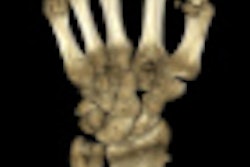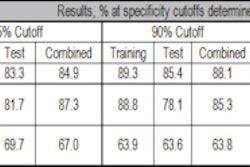Mingliang Qu, MD; Cynthia McCollough, PhD; and colleagues will discuss the use of an advanced dual-energy image processing algorithm to improve the ability of a 100-kV/140-kV dual-energy CT protocol to differentiate renal stone types.
Large water phantoms were packed with ground meat embedded with six stone types, to mimic large patient sizes. The study included 80 human renal stones, including 18 uric acid (UA), 13 cysteine (CYS), 11 struvite (STR), 15 calcium oxalate (COX), 13 brushite (BRU), and 10 apatite (APA).
Images were acquired on a dual-source CT scanner at 100 kV/140 kV with tin filtration on 140 kV, and the team used a MatLab-based algorithm to segment the stones and calculate the ratio of CT values of two energies (CTR) voxel by voxel.
The team found significant differences in CTR between CYS and other stone types, except for STR. STR significantly differed from COX, BRU, and APA in most of the phantoms. However, there were no significant differences between COX, BRU, and APA.
Receiver operator characteristics (ROC) analysis showed sensitivity of 94% to 100% for the detection of UA stones in the large phantoms, the group found.



















